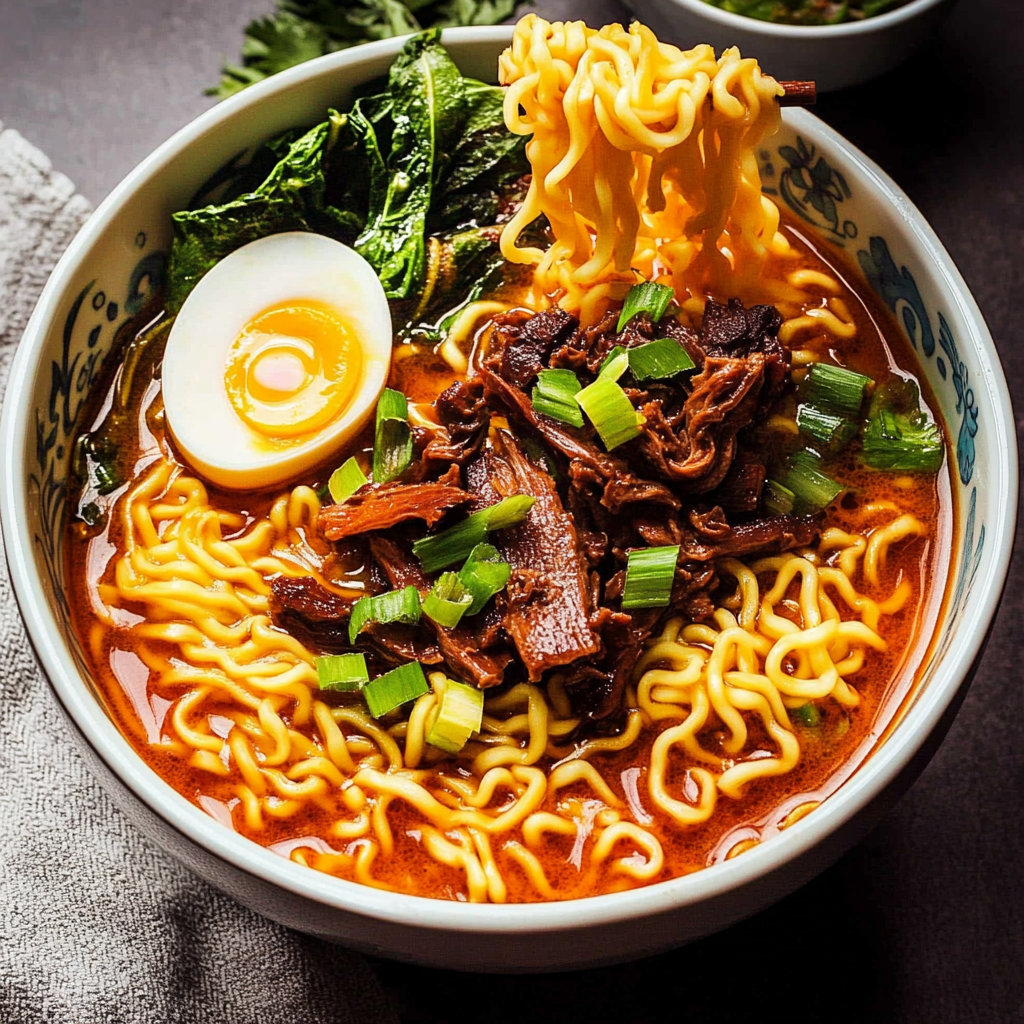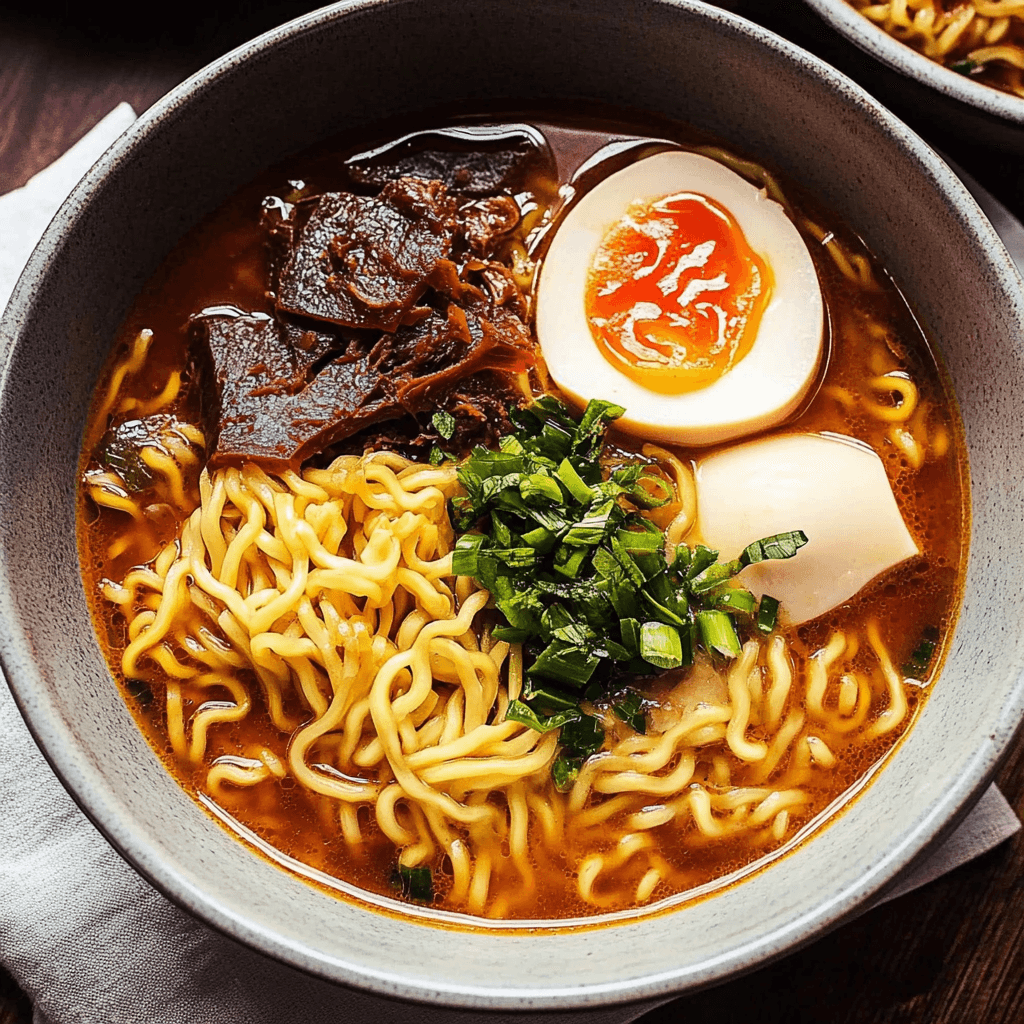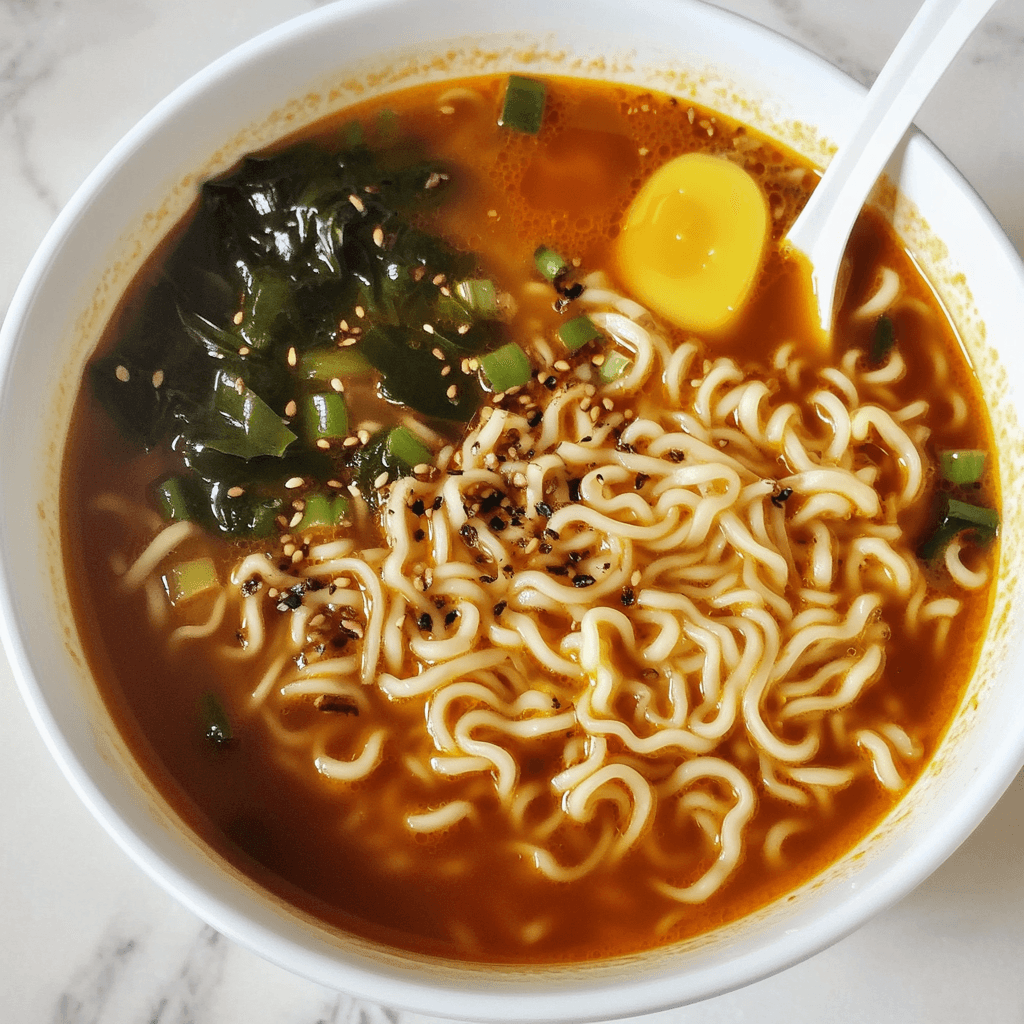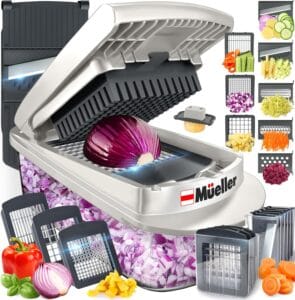Introduction and Key Insights
Ramen noodle soup stands as a beloved dish in kitchens worldwide. Its rich flavors and comforting warmth make it a go-to meal for many. This delightful dish originated in Japan but has since gained popularity globally due to its versatility and heartiness. Whether you enjoy it with savory broth or vibrant toppings, ramen noodle soup can be customized to fit every taste preference. In this article, we will explore the essential ingredients needed to create an authentic bowl of ramen noodle soup from scratch. You’ll also discover a detailed step-by-step guide on how to prepare this dish effortlessly at home.

The beauty of ramen lies in its ability to bring people together. It’s often shared among family and friends during gatherings or enjoyed solo on a cozy evening at home. With its umami-rich broth and chewy noodles, each bowl is a celebration of flavors and textures. You can easily adapt this recipe based on your preferences by adding vegetables or proteins that you love. By following this guide, you’ll not only learn how to make the perfect ramen noodle soup but also impress your loved ones with your culinary skills.
So grab your apron and let’s dive into the world of ramen. This guide will provide everything you need to know about crafting a delicious bowl of ramen noodle soup that warms both the body and spirit.
Ingredients Overview for Ramen Noodle Soup
Broth
A rich broth is the backbone of any good ramen noodle soup. Typically made from chicken or pork bones simmered for hours, it develops deep flavors that form the base of your dish. You can also use vegetable broth for a lighter option. To enhance the flavor, consider adding aromatics like ginger, garlic, and green onions while simmering.
Noodles
Ramen noodles are essential for achieving that authentic texture in your dish. Look for fresh or dried egg noodles specifically labeled as “ramen.” The right noodles should be slightly chewy and hold up well in broth without becoming mushy. Cooking them just before serving ensures they maintain their ideal consistency.
Toppings
Toppings add visual appeal and texture to your ramen noodle soup. Common choices include sliced green onions, boiled eggs, nori (seaweed), bamboo shoots, and sliced meats such as chashu (braised pork). Each topping contributes unique flavors that elevate the overall dish.
Seasoning
Seasoning plays a crucial role in bringing out the best flavors in your broth and noodles. Soy sauce is often used for saltiness while miso paste adds depth with its fermented goodness. Don’t forget sesame oil; just a few drops can elevate your entire bowl of ramen.
Vegetables
Adding vegetables not only enhances nutrition but also adds freshness to your dish. Common choices include bok choy, mushrooms (shiitake or enoki), corn, and bean sprouts. These ingredients provide crunchiness while soaking up all those wonderful flavors from the broth.

How to Prepare Ramen Noodle Soup
Step 1: Make the Broth
Start by preparing your broth as it requires time to develop flavor. If you’re using bones, place them in a large stockpot with water covering them completely. Bring the pot to a boil over high heat before reducing it to low heat once boiling begins. Add ginger slices and smashed garlic cloves for added depth of flavor; simmer for at least 4 hours if using meat bones—longer if possible—for optimal flavor extraction.
If opting for vegetable broth instead of meat-based options, combine water with chopped onions, carrots, garlic cloves, kombu seaweed (for umami), mushrooms like shiitake or cremini mushrooms along with soy sauce in another pot; let this mixture simmer together until fragrant—approximately 30 minutes should suffice.
Once cooked adequately based on chosen method (meat vs vegetable), strain out solids while reserving liquid as your delicious base.
Step 2: Prepare Noodles
Next comes preparing your ramen noodles. If using dried noodles: follow package instructions closely regarding soaking/cooking time—generally they need boiling water for just 2-5 minutes until al dente. Drain them thoroughly afterward ensuring no excess water clings onto surface which can dilute flavors when combined later.
For fresh noodles: simply boil them briefly following similar guidelines mentioned above then drain before rinsing under cold running tap water briefly—this helps stop further cooking process ensuring they remain chewy throughout final assembly stage later on.
Step 3: Cook Toppings
While waiting on both broth & noodles; turn attention towards prepping toppings. For soft-boiled eggs—place eggs gently into boiling water & cook exactly six minutes before transferring directly into ice bath until cool enough handle safely; peel shells away from cooled eggs afterward cutting each one carefully half-lengthwise revealing golden yolks intact inside.
For other toppings like sliced meats—sear off any protein options required (chashu/pork belly) beforehand preferably utilizing same pan used earlier retaining all those flavorful bits left behind post-cooking—these add extra layers enhancing overall essence within final product.
Chop green onions finely discarding tough ends alongside slicing mushrooms thinly if applicable too; set aside as ready-to-go garnishing components shortly afterward.
Step 4: Assemble Your Ramen
Now comes assembling each component together into one beautiful bowl. Start off by pouring hot strained broth over cooked noodles placed at bottom followed closely by arranged toppings atop including those soft-boiled eggs halved alongside any desired additional garnishes such as nori sheets/bean sprouts etc., finishing off with drizzle(s) sesame oil plus sprinkle(s) freshly cracked pepper onto finished presentation making sure every bite remains bursting full flavor-wise.
It’s important not rush through this stage since visuals play major role satisfying appetites visually before even tasting anything—so take time arranging everything artfully ensuring maximum enjoyment derived from every slurp taken thereafter.

Serving and Storing Tips
Serving Suggestions
When serving ramen noodle soup consider presenting it attractively. Use large bowls allowing ample space showcasing colorful ingredients layered neatly atop steaming hot broths bubbling eagerly below inviting guests/taste-testers alike. Pair bowls alongside chopsticks & small spoons ensuring diners access both liquid & solid components easily aiding satisfaction derived from experience enjoyed overall.
Encourage customization amongst diners too offering variety toppings available separately allowing individuals personalize their own bowls according individual preferences enhancing enjoyment even further plus creating sense community surrounding dining experience held altogether through shared love food brings forth.
Storage Guidelines
If you have leftovers remaining after enjoying meal don’t fret. Store any uneaten portions promptly placing them within airtight containers ensuring maximum freshness preserved longer than normal; refrigerate promptly consuming within three days ideally although freezing options exist extending shelf life beyond initial period allowed too if desired done correctly beforehand.
When reheating please remember separate storage techniques employed here—broth should be warmed separately prior pouring over freshly cooked/reheating noodles directly avoiding soggy mess occurring otherwise. Enjoy safely knowing deliciousness still waiting patiently nearby ready reappear whenever cravings arise again soon later down road ahead promising delightful memories created anew each time indulging back into comforting embrace offered by favorite classic comfort dishes like this one cherished forevermore.
Mistakes to avoid
One common mistake when making Ramen Noodle Soup is not properly preparing the broth. The broth serves as the foundation of your soup, influencing the overall flavor significantly. Skipping steps like simmering bones or using low-quality stock can result in a bland final product. Always take the time to create a rich broth using fresh ingredients, herbs, and spices. Consider adding garlic, ginger, and green onions for depth.
Another frequent error is overcooking the noodles. Ramen noodles should have a firm texture known as “al dente.” If you cook them too long, they can become mushy and unappetizing. To avoid this, cook the noodles separately from the broth and add them just before serving. This method retains their texture while allowing them to absorb the flavors of your soup.
Underseasoning is yet another pitfall when preparing Ramen Noodle Soup. Many home cooks tend to be cautious with salt and seasoning, fearing it might overpower the dish. However, Ramen relies on a balance of flavors; a touch of soy sauce or miso can elevate your soup dramatically. Taste as you go and adjust seasoning accordingly.
Finally, neglecting garnishes can lead to a lackluster presentation and flavor profile. Fresh herbs, chili oil, or sesame seeds can enhance both aesthetics and taste. Always remember that garnishes are more than just decoration; they contribute essential flavor elements that round out your dish beautifully.

Tips and tricks
When making Ramen Noodle Soup, one effective tip is to pre-cook your protein separately. Whether you’re using chicken, pork, or tofu, cooking these ingredients before adding them to your soup allows for better control over texture and flavor. By searing or grilling beforehand, you can ensure each piece remains juicy while preventing it from becoming overcooked in the broth.
Using high-quality ingredients also makes a significant difference in the outcome of your Ramen Noodle Soup. Opt for fresh vegetables and premium noodles whenever possible. Fresh ingredients not only taste better but also provide added nutrients that enhance the soup’s overall quality.
Another useful trick is to add umami-rich ingredients such as dried mushrooms or seaweed during the simmering stage of your broth. These components infuse deep flavors into the liquid without requiring additional effort from you. Simply let them steep in the broth for maximum effect.
Lastly, don’t overlook presentation. A well-plated bowl of Ramen Noodle Soup can elevate your dining experience immensely. Use contrasting colors for vegetables and arrange toppings artfully on top of your noodles. A little effort here can impress guests or make your meal feel extra special.
Suggestions for Ramen Noodle Soup
To enhance your Ramen Noodle Soup further, consider experimenting with different types of broths beyond traditional chicken or pork options. Vegetable-based broths offer a lighter alternative while still providing rich flavors when combined with miso paste or soy sauce. You could also try creating a seafood-based broth using fish heads or shells for an ocean-inspired twist.
Changing up your noodle selection is another suggestion worth considering. While traditional ramen noodles are fantastic, other varieties like udon or soba can offer unique textures that complement different broths beautifully. Have fun exploring these options to find what works best for your palate.
Incorporating seasonal vegetables into your soup not only adds color but also boosts nutritional content. For example, spring peas or corn in summer bring sweetness that balances savory elements in your dish perfectly. This approach keeps meals vibrant throughout the year while allowing you to utilize locally sourced produce.
Finally, don’t hesitate to personalize your bowl. Adding toppings like soft-boiled eggs enhances richness while chili flakes add spice if desired—tailoring each bowl ensures everyone enjoys their ideal version of Ramen Noodle Soup.

FAQs
What is Ramen Noodle Soup?
Ramen Noodle Soup is a beloved Japanese dish made with wheat-based curly noodles served in a flavorful broth along with various toppings such as sliced meats (like chashu), vegetables (like bok choy), and seasonings (like scallions). The dish has endless variations depending on regional styles and personal preferences but typically emphasizes umami-rich flavors that satisfy hunger while comforting anyone who enjoys it.
How long does it take to make Ramen Noodle Soup?
The total time required for making Ramen Noodle Soup depends largely on whether you’re preparing homemade broth from scratch or opting for store-bought options instead. If you choose homemade broth made from bones or simmered vegetables, expect about 4–8 hours of preparation time; however, this investment yields richer flavors compared to quick alternatives. When using pre-made stock alongside cooked proteins/noodles ready within 30 minutes gives immediate satisfaction without sacrificing quality.
Can I make Ramen Noodle Soup vegetarian?
Absolutely. Vegetarian versions of Ramen Noodle Soup are just as delicious as their meaty counterparts by substituting vegetable stock instead of animal products while adding tofu for protein balance alongside an array of veggies like mushrooms & spinach plus miso paste enhances umami richness. With so many possibilities available today—it’s easy enough even non-vegetarians will appreciate its flavor profile.
What types of toppings go well with Ramen Noodle Soup?
Toppings play an essential role in elevating any bowl of Ramen Noodle Soup. Classic options include chashu (braised pork belly), soft-boiled eggs marinated in soy sauce (ajitsuke tamago), nori sheets (seaweed), green onions chopped finely & menma (fermented bamboo shoots). However don’t shy away from creativity – feel free experiment adding things such kimchi spicy chili oil sesame seeds cilantro—it’s all about personalizing every single bowl.
Can I freeze leftover Ramen Noodle Soup?
Freezing leftover portions isn’t recommended due primarily due noodle absorption nature—they turn mushy upon reheating post-freeze process; however separating individual components before freezing ensures preservation. Store cooled broth separately from toppings/noodles; thaw later then reheat components separately right before serving fresh again—this way you retain optimal textures & flavors.
How do I store leftover Ramen Noodle Soup?
To store leftover Ramen Noodle Soup effectively follow these steps: Allow soup mixture cool completely before transferring into airtight containers—prioritize separating ingredients like noodles/protein/broth helps maintain quality longer. Refrigerate leftovers consume within 2–3 days max; alternatively freezing works too—but remember separate components ideally mentioned above—reheating properly ensures delightful eating experience once again.
Conclusion
In summary, crafting an exceptional bowl of Ramen Noodle Soup involves avoiding common mistakes such as under-seasoning and overcooking noodles while incorporating valuable tips like pre-cooking proteins and selecting high-quality ingredients wisely enhances overall flavor profiles significantly too. Don’t forget suggestions like trying diverse broths/vegetables/nudles keep meals exciting & nutritious across seasons—and allow room personalized garnishes/toppings expressing individuality every time served at table. Remember: good preparation goes hand-in-hand with creativity ensuring everyone enjoys every delightful spoonful made together. Enjoy exploring all aspects surrounding this versatile dish whenever possible—the journey itself becomes part enjoyable experience shared with loved ones around dinner tables everywhere.
Print
Delicious Ramen Noodle Soup Recipe
5 Stars 4 Stars 3 Stars 2 Stars 1 Star
No reviews
- Author: Clara Rosewood
- Total Time: 15 minutes
- Yield: 2 servings 1x
- Diet: Vegetarian
Description
Ramen Noodle Soup is a simple, yet flavorful dish that features tender ramen noodles in a savory broth with vegetables and your choice of protein. A quick and easy meal that can be customized to your taste with seasonings, toppings, and add-ins like eggs, green onions, and meats. Perfect for lunch, dinner, or a cozy, comforting meal on cold days.
Ingredients
- 4 cups chicken broth or vegetable broth
- 1 tablespoon soy sauce
- 1 teaspoon sesame oil
- 1/2 teaspoon garlic powder
- 1/2 teaspoon ginger powder
- 2 packs of instant ramen noodles (discard the seasoning packet)
- 1/2 cup sliced mushrooms (shiitake, cremini, or white)
- 1/2 cup spinach or bok choy (optional)
- 2 soft-boiled eggs (optional)
- 1/2 cup sliced green onions
- 1 tablespoon sesame seeds (optional)
- Toppings (optional): cooked chicken, pork, tofu, or shrimp, chili flakes, or chili oil
Instructions
- Prepare the broth:
In a large pot, combine the chicken broth (or vegetable broth), soy sauce, sesame oil, garlic powder, and ginger powder. Bring the mixture to a simmer over medium heat. - Add vegetables and noodles:
Stir in the sliced mushrooms and cook for about 3-4 minutes, allowing them to soften. Add the ramen noodles and cook according to package instructions, typically for 2-3 minutes. If you’re using spinach or bok choy, add it during the last minute of cooking to wilt it. - Assemble the soup:
Once the noodles are cooked, ladle the soup into bowls. Add any proteins or additional toppings you like, such as a soft-boiled egg, cooked chicken, tofu, or shrimp. - Garnish and serve:
Garnish the soup with sliced green onions, sesame seeds, and chili flakes or chili oil for added heat. Serve immediately while hot.
Notes
- For a richer flavor, you can add a splash of fish sauce or miso paste to the broth.
- If you prefer a spicier soup, add chili paste or sriracha to the broth before cooking.
- Leftover ramen noodle soup can be stored in the refrigerator for 1-2 days, but be sure to store the broth and noodles separately to keep the noodles from becoming soggy.
- Prep Time: 5 minutes
- Cook Time: 10 minutes
- Category: Soup
- Method: Stovetop
- Cuisine: Japanese-inspired

 Brown Sugar and Coconut Body Scrub Exfoliates
Brown Sugar and Coconut Body Scrub Exfoliates 
 Get The Product!
Get The Product!







